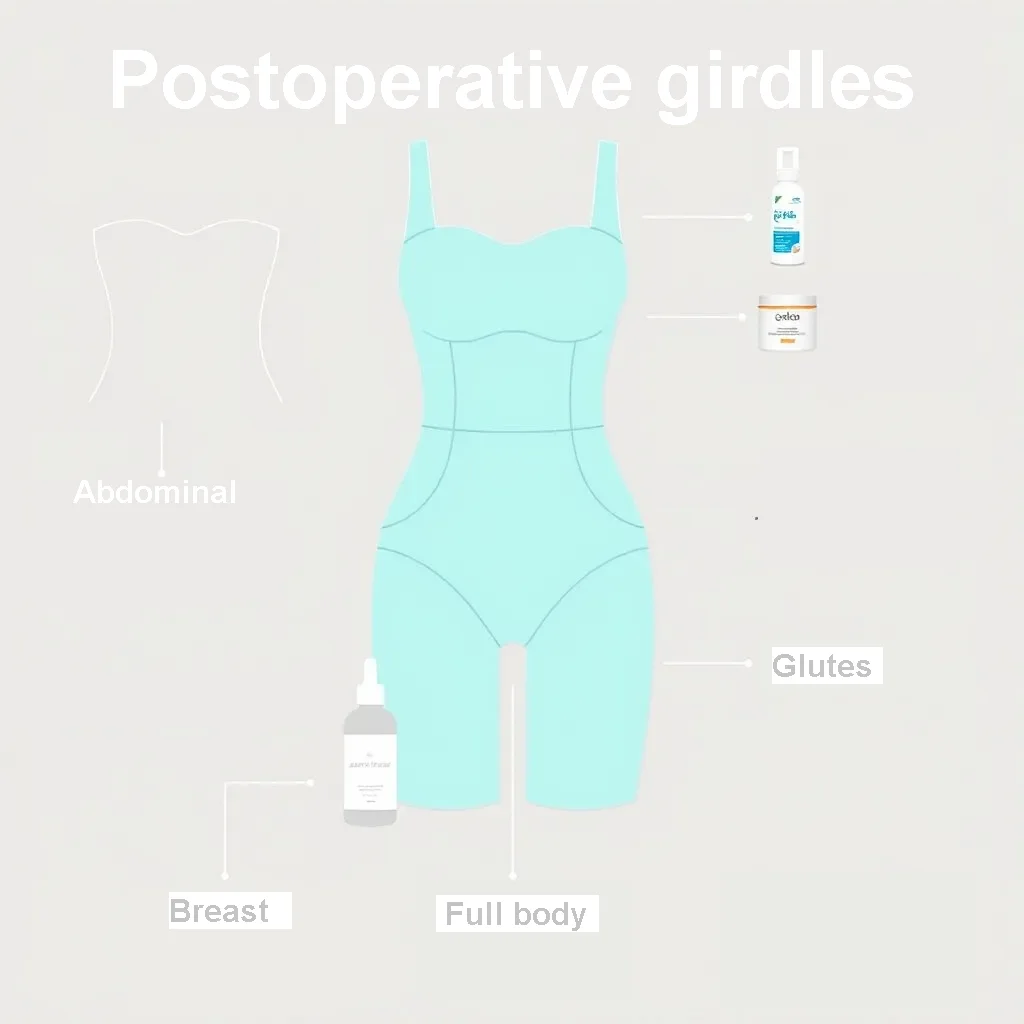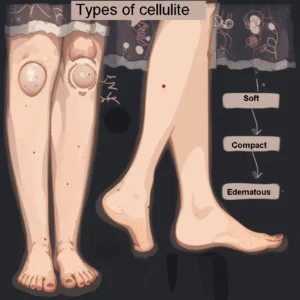

Postoperative girdles: discover the ideal one for your type of surgery
Postoperative girdles: discover the ideal one for your type of surgery
Postoperative girdles are an essential tool for a successful recovery after surgery. They not only help reduce inflammation but also provide support to the treated area, improving body contour. Therefore, choosing the right girdle can make the difference between a comfortable recovery or a complicated experience.
In this guide, we’ll explain the best girdle option based on the type of surgery you’ve undergone. You’ll also learn practical tips, key benefits, and recommendations for proper use.
1. Importance of Postoperative Girdles

After surgery, the body needs stability and compression to heal properly. In this sense, postoperative girdles provide both functions, helping to reduce pain, minimize bruising, and also control swelling. In addition, they promote blood circulation, which contributes to a faster and more effective recovery. Their use can even prevent complications such as seromas or tissue displacement.
2. Types of Surgery and the Ideal Girdle
Each surgical procedure requires a specific girdle to maximize the benefits of compression. For this reason, below are the most common:
2.1 Liposculpture
- Full-body girdle with adjustable straps
- Front closure for greater comfort
2.2 Abdominoplasty
- High abdominal girdle with reinforcement in the navel area
- Internal panels for additional support
2.3 Mammoplasty (breast augmentation or reduction)
- Post-surgical bra with chest compression band
- Wire-free and seamless
2.4 Buttock lift (BBL)
- Girdle with a buttock opening to avoid pressure
- Medium-high compression in the abdomen and legs
2.5 Cesarean section or childbirth
- Soft girdle with gradual adjustment
- Design that allows mobility and wound care
3. Benefits of Wearing Postoperative Girdles
The proper use of postoperative girdles has proven benefits. For example:
- They help maintain the results of surgery by holding the newly treated tissues in place, preventing shifting or deformation during the healing process.
- They provide security and comfort, which is essential during the first days of recovery, when the body is still sensitive and vulnerable.
- They prevent postoperative complications, such as seromas, prolonged edema, hematomas, or infections, by controlling inflammation and promoting proper fluid reabsorption.
- They improve body posture, especially in abdominal or back surgeries, by providing additional support to weakened muscles and promoting proper alignment.
- They reduce recovery time, allowing the patient to gradually resume their daily activities with greater confidence and less pain.
Thanks to their constant support, these garments allow the skin to adhere properly to the underlying tissue, resulting in a firmer and more aesthetic appearance. Thus, they not only improve aesthetics but also directly influence the patient’s health.
4. When and How to Use a Postoperative Girdle
Specialists recommend starting to wear the girdle as soon as your doctor prescribes, usually within the first 24 hours. During this initial period, it should be worn almost all day, only removing it for bathing.
Some key tips include:
- Make sure the girdle fits snug but not restrictive
- Hand wash it to maintain its elasticity
- Do not use it if it is damp or wet
- Consult your surgeon if you experience any discomfort
It’s important to note that the length of use may vary depending on the procedure, but typically ranges from 4 to 12 weeks. Therefore, it’s essential to follow the doctor’s instructions carefully.
5. Criteria for Choosing the Best Girdle
Choosing the right girdle depends on several factors. Therefore, consider the following:
- Type of surgery: As we’ve already explained, each procedure requires a specific girdle. Wearing a girdle appropriate for the type of surgery (abdominoplasty, liposuction, mammoplasty, etc.) ensures localized compression, which promotes a safer and faster recovery.
- Appropriate size: Choose the size based on your current measurements, not your desired or pre-surgery measurements. An incorrect size can cause discomfort, impair circulation, or even compromise the results of the operation. It’s advisable to take measurements with a tape measure and, if possible, consult the manufacturer’s sizing chart.
- Hypoallergenic materials: These materials are ideal for sensitive skin, as they prevent irritation, redness, and allergic reactions. They also allow for improved breathability, reducing the risk of skin infections during prolonged use.
- Ergonomic design: It should fit the contours of the body without causing creases or chafing. A good design facilitates daily mobility, prevents unnecessary discomfort, and allows the girdle to be worn for several hours without interruption.
- Ease of use: Accessible zippers, snaps, or Velcro closures allow for effortless putting on and taking off of the girdle, which is especially important in the early days after surgery, when mobility may be reduced or limited by pain.
Ultimately, comfort is key. A good girdle should allow you to breathe normally while still allowing you to move without discomfort.
6. Common Mistakes When Using Postoperative Girdles
Despite their usefulness, many people make mistakes that can affect recovery. Among the most common are:
- Using the wrong size
- Stopping using it prematurely
- Putting it on incorrectly
- Not washing it frequently
- Using generic girdles not designed for the type of surgery
Therefore, avoiding these mistakes is crucial for postoperative girdles to perform their function properly.
7. Skin Care During Use
During prolonged use of girdles, the skin needs special attention. In this sense, moisturizing the area daily with gentle creams helps prevent dryness or irritation. Additionally, maintaining good hygiene and wearing cotton underwear under the girdle can improve the wearing experience.
However, avoid applying products with fragrances or alcohol directly under the girdle, as these could cause reactions.
8. The Best Post-Surgery Girdle Brands
Although there are many brands on the market, some stand out for their quality, durability, and comfort. Among them, we can mention:
- Fajate: popular for its anatomical fit
- MariaE: specialized in girdles for liposuction and tummy tucks
- Salome: recommended for its comfort
- Ann Chery: girdles with modern and functional designs
However, always consult with your surgeon about the most recommended brands for your type of surgery.
9. Frequently Asked Questions About Post-Surgery Girdles
Do post-surgery girdles hurt?
They shouldn’t hurt. If they do, it could be due to the wrong size.
Can I sleep in the girdle?
Yes, it’s recommended in most cases.
How long should I wear it each day?
It depends on your case, but between 18 and 22 hours is typical.
Can you wear more than one girdle?
Some specialists recommend alternating between two girdles to maintain hygiene.
10. Choose your post-operative girdle with confidence
Choosing the right girdle not only improves your comfort but also speeds up your recovery process and guarantees better aesthetic results. Ultimately, post-operative girdles are indispensable allies after surgery. Make sure you receive professional guidance, invest in quality, and, above all, follow the instructions for use. This way, you’ll be taking an important step toward a successful and safe recovery.
Remember: every body is different, and what works for others may not be ideal for you. Listen to your body, consult your specialist, and ultimately choose the girdle that perfectly suits your needs.
Explore other related articles by clicking here and Visit the official website here




